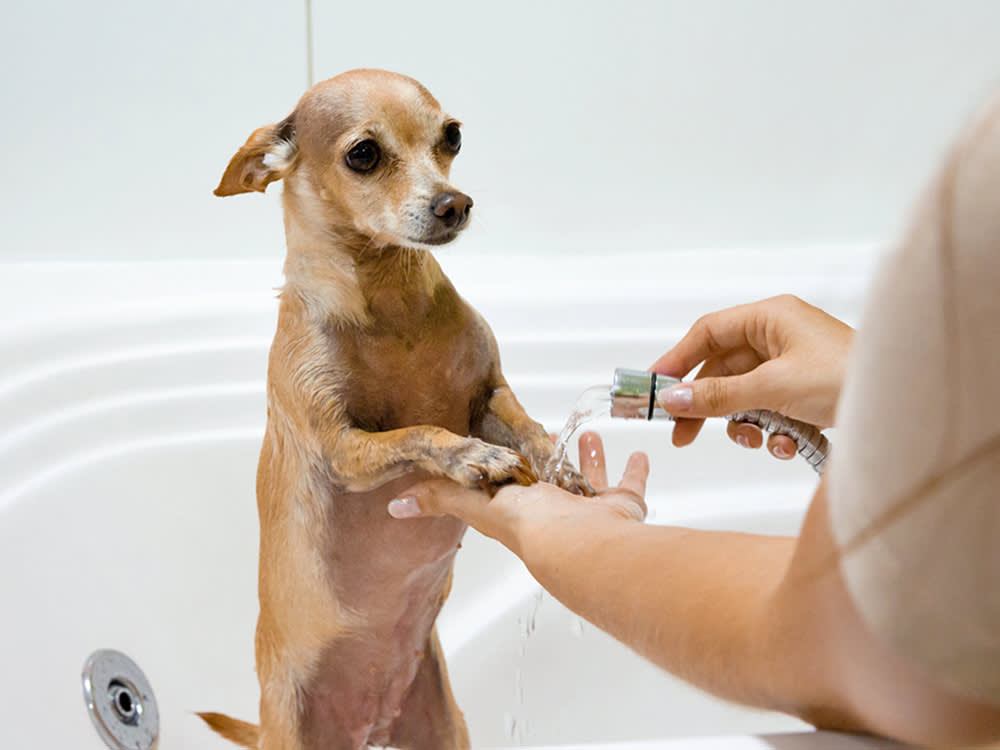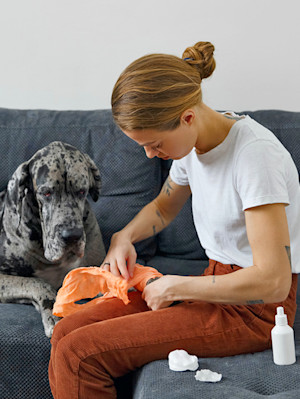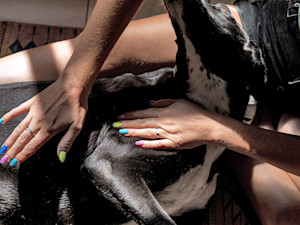Is Your Home Safe? Common Causes of Pet Burns in the UK and How to Prevent Them
Learn essential steps to treat pet burns , from first aid to when to seek veterinary care

Share Article
In this article:
Types of burns in pets Types of burn severity First aid for pet burns When to seek vet care Burn treatment options Tips to prevent burns in pets
Burns on pets can be distressing and, if not treated quickly, may lead to severe complications. Whether caused by hot surfaces, chemicals, or electrical accidents, pet burns require immediate attention to ensure a swift recovery. In this guide, we’ll explore effective ways to treat burns on pets in the UK, covering everything from first aid tips to when it’s crucial to see a vet. You’ll also learn essential prevention strategies to keep your cat or dog safe from potential burn hazards at home. By following these expert recommendations, you can help your pet heal quickly while minimising pain and risk of infection.
Understanding different types of burns in pets
Burns can be divided into different types of injury depending on how your pet burned themselves.
Thermal burns: caused by contact with a hot substance or surface. Common causes of thermal burns in pets include pans of boiling water, sunburn, house fires, tumble dryers and microwaves.
Chemical burns: caused when strong acids or alkalis make contact with the skin. These commonly occur if pets have access to chemicals such as bleach and other cleaning products. Pets with access to the garage, containing chemicals such as motor oil, drain cleaners and battery acid, are also at risk.
Electrical burns: caused by electrocution. In pets this usually occurs when they chew through an electrical cord.
How to assess burn severity in your pet
Much like the degree classification of burns in humans, there are different types of burn severity in pets, too.
Superficial burns (equivalent to first-degree burns in humans): involve just the outer skin layer – called the epidermis. These appear as reddened, swollen skin and are typically very painful.
Partial-thickness burns (the animal equivalent of second-degree burns): involve the second layer, the dermis. They tend to blister and are also very painful.
Full-thickness burns (known as third-degree burns in humans): the most serious but often the least painful. This is because of the damage to the subcutaneous tissues including underlying muscle, fat and nerve endings. In third-degree burns the skin will appear white or charred.
Step-by-step first aid for pet burns: what to do immediately
The aim of first aid is to stop the burn progressing, reduce pain and inflammation, and to reduce the chance of infection as soon as possible. Here are the steps to take when you discover a burn on your pet.
Ensure your own safety
Before removing your pet from the source of the burn, turn electricity off, remove chemicals or hot water, extinguish or move away from fire, for example. If material has melted to the skin do not attempt to tear it away or you could cause more damage, and if the burn was chemical in nature then make sure the chemical is not rinsed onto unaffected skinopens in new tab of your pet or you.
Run cold water over the burn
Tissue damage continues after the heat source has been removed so running cold water over the areaopens in new tab as soon as possible (within three hours) for 20 minutes helps to cool the area and reduce pain and inflammation. Take care not to wet your pet excessively and take steps to keep the rest of them warm and dry. If you are able to, check their temperature. Do not use ice.
Cover the burn with non-stick dressing or cling film
Wear gloves whilst touching the burn. Lay loose strips of cling filmopens in new tab over the area (do not wrap around).
Seek veterinary advice
Get your pet to a vet as soon as possible. Ensure to have full details of the cause of the burn; for instance if a chemical was involved then take the label with you.
It is sensible to keep some essential pet first aid supplies at home, including:
scissors
non-stick dressings or cling film
medical gloves
sterile saline
When to seek emergency vet care for pet burns
As with any injury on your cat or dog, it's better to be safe than sorry and get your pet checked out by a veterinary professional. However, some burns warrant urgent veterinary care as soon as possible.
The veterinary practice where your pet is registered should be the first point of contact as they are best placed to advise you. Every practice must provide 24-hour emergency cover and will inform you where to go in the event of an emergency. Alternatively many insurance providers offer veterinary telephone advice.
Particular injuries that require emergency veterinary care include:
Any deep burns or for burns covering a large area of the body.
Injury to the face, eyes or genitals.
Burns in the mouth and gastrointestinal tract, in particular those caused by ingested chemicals.
Smoke inhalation and airway burns can cause significant respiratory distress so should never be left untreated by a professional.
Additional symptoms such as lethargy or collapse, not eating, vomiting or seems in a lot of pain.
Why are burns on pets so serious?
Even relatively minor burns can have life threatening complications. Burns are exceptionally painful and can cause tremendous suffering if left untreated. Burns are open wounds prone to infection, which can lead to sepsis, and they can also cause fluid loss, resulting in dehydration and shock in your pet.
Burns caused by fires can cause additional problems due to the inhalation of exceptionally hot air and smoke, which can cause life threatening damage to the lungs.
Veterinary burn treatment options and home care
Depending on the severity and location of the burn, your vet is likely to provide a combination of intravenous fluids, pain relief, antibiotics, wound care and dressings. If the burn is extensive or very deep, your pet may require surgery to remove any dead tissue and reduce the size of the wound. Tissue grafts may also be required.
Your vet will give you instructions on how to manage the burn at home after any professional treatment. If the area has been bandaged then it is important to keep the dressing dry and clean. The bandage should have a waterproof cover when your pet goes outside and your pet should be walked on clean, dry surfaces. If the burn has been left uncovered then it should be kept clean. Do not apply any creams or ointments unless directed to by your vet.
You will likely have been given some medications to give at home, make sure to give this at the prescribed intervals to ensure there is no lapse in pain relief or antibacterial cover. Many medications need to be given either with food or on an empty stomach so make sure to be clear on the instructions for this. It is best to give medication straight into your pet’s mouth to ensure they have taken it. If this isn’t possible then hiding it within a small, malleable, low-fat treat can help.
How to prevent burns in dogs and cats at home
Burns on pets require immediate and careful attention. By following the steps outlined in this guide, you can help ensure your pet’s recovery and comfort, but there are also a number of things you can do around the home to prevent any burns from happening in the future.
If your pet has white skin or pale pink patches, apply pet-safe sunscreen if they are out during sunny weather.
Bonfire Night often results in injuries to pets. Keep them indoors when fireworks or bonfires are scheduled.
Crating your dog whilst unsupervised prevents them from accessing items that could cause harm.
Keep your pet out of the kitchen whilst cooking. Hot pans should be kept away from the edge.
Keep chemicals out of paws reach and keep your pet away whilst you are using chemicals to clean.
Electrical cables should also be kept out of reach and plugs should be turned off when not in use.
Irons, straighteners and curling tongs should be stored away from pets whilst cooling.
Consider using fire guards to keep your pets away from fires and heaters.
Fire alarms should be regularly checked to ensure they are functional.
The dryer is warm and cosy and a favourite place for your pet to curl up in. Keep the door closed and always check that your dryer is empty before use.
Frequently asked questions
How long will my pet’s burns take to heal?
Burns typically take longer to heal than other wounds. The speed of recovery varies hugely between different animals, depending on underlying disease status and severity and location of the burn. Some may take several months to heal.
How can I reduce scarring?
Your vet may offer laser therapy to improve wound healing and improve the appearance of scars.
Should I pop the blisters?
Do not burst blisters as this can introduce infection.
What can I apply to a burn to help it to heal?
In general, creams and ointments should not be applied to the burn, unless prescribed by a veterinary professional, as they can do more harm than good. However, Manuka, medical-grade honey is a great product for burns as it has antibacterial properties.
Will my pet need to wear a buster collar or medical pet shirt?
Burns are not only painful, but also itchy and animals will typically chew and scratch at them, increasing the risk of infection and delaying healing. Your pet should be prevented from doing this by applying a well fitting buster collar or medical pet shirt.
My pet’s burn doesn’t look too bad, will it be OK?
Your pet’s fur may disguise the true extent of the injury. Burns continue to develop over timeopens in new tab so a small, innocuous burn can progress into a serious one without treatment. Monitor your pet carefully for any sign of deterioration and always check-in with a vet if you’re unsure.
Can I place a bandage at home?
This is not recommended unless you have been shown how to do it by a vet and been given dressings to use at home. If a burn is bandaged incorrectly, the dressing may stick to the burn and make it worse. Bandages that are applied too tight can restrict the blood supply, delay healing and, in some cases, cause further wounds to develop. It’s often best to seek out professional help where possible.
Resources

Dr Nina Blackmore, MRCVS, BVSc, PgCertSAECC
Nina Blackmore is a vet who, after leaving the Royal Army Veterinary Corps, took up two very different lives. For four long, chaotic days each fortnight she lives in a tiny house next to a small animal veterinary hospital in Boston, managing hospitalised patients and treating any emergency cases that turn up. As well as emergencies she also has a keen interest in pain management and acupuncture. The rest of her time is spent in a quirky bungalow in Rutland where she and her husband run a self sufficient small holding and a dog home boarding business. She spends her life surrounded by animals and has made it her life goal to help as many as possible.




